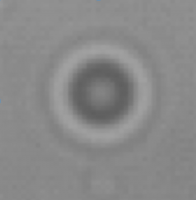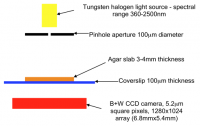Introduction
The rapid identification of microbes has many important applications in our society from understanding the evolution of hospital acquired infections to the detection of microbes of accurate antibiotic diagnosis. The problem is that identification usually requires the bacteria to be cultured which may take several days although even this is not guaranteed. The best way to identify a bacterium is for rapid PCR of the genome to make a genetic identification but this is a laboratory process. What is required is a way to identify bacteria simply, accurately and rapidly – in less than ten minutes.
Aims and Objectives
The project is using a lens-free microscope configuration to image and profile the phenotype of bacteria for rapid identification.
Project Directions
The lens-less microscope configuration allows light from a pinhole source to fall on a microscope slide and be imaged directly onto a digital camera chip which without the lens produces a diffraction pattern called an Airy pattern. The evolution of the pattern in time follows the growth of the bacterial colony on the medium on the microscope slide. The analysis of the Airy-type pattern yields information on the size and shape of the colony and how it grows, symmetrically or asymmetrically. We are looking at the physical properties of the image and the growth characteristics of the colony to provide ways to identify the bacterium using both time and the evolving phenotype.
References
The Royal Commission for the Exhibition of 1851
Contact the Research Group for more details.

